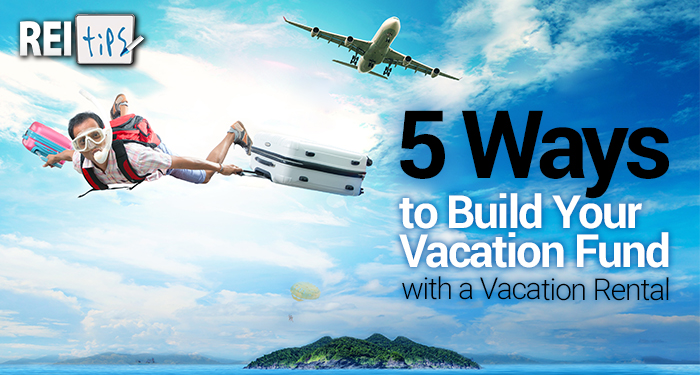Sounds great, right?
But before you take the dive into this growing market, make sure you get ALL the information you need.
What Is an STR?
Short-Term Rentals are furnished properties rented out for short stays. Guests stay one or two days or a few weeks.
These properties are often posted on sites like Airbnb and vrbo. Vacationers love STRs because they offer great prices, more privacy and more space.
STR options are also incredibly flexible. Go on Airbnb’s site and you’ll find everything from single rooms to large homes available for rent. Some homes require a multi-day booking, while others can be rented for a single night.
What’s the Catch?
STRs do offer some unique challenges for investors.
Pricing for an STR can vary week to week. You can charge more in busy seasons, say, when there’s a popular concert in the neighborhood or during the summer when families typically go on vacation. But you should lower your rates when it’s slow, to keep the property occupied.
And, of course, the property needs to be cleaned in between guests and furnished before it’s rented out, in addition to regular maintenance. Plus, you should invest in marketing to attract guests.
All of this adds up to time (or expense) that isn’t required for traditional rentals. Even so, if you’re in the right market, you can still walk away with more income from an STR compared to a traditional rental.
Is an STR worth it?
Take a look at these 5 ways to get started with an STR and see for yourself.
1. Evaluate Your Market
Before you make the decision to invest in an STR, do some market research.
First, find out about other STRs in the neighborhood you’re considering. Go on a few STR sites, including Airbnb, VRBO and HomeAway, to look for properties in your area. Look at their calendars to get an idea of how often they’re vacant.
INSIDER TIP: If a calendar is completely booked, don’t assume that’s all short-term renters. The property owner might be staying there or the property might not be available for STR temporarily.
Look at the rates for local properties to see how much they charge.
Next, check out a few market tools, such as AirDNA.co…
AirDNA is Airbnb’s data and analytics site – it gives you stats on your area including forecasted annual revenue, the average daily rate and expected occupancy rate – both for your area and for an address you type in.
Some of the information on this site is free, and some of it requires a subscription. And remember to factor in cleaning fees, property management and taxes when you’re looking at revenue numbers.
INSIDER TIP: Sites like AirDNA are helpful in more urban areas with plenty of host properties, but the data is not as accurate if your property is in a more rural location or an area with only a few host properties. So do some other research to get a complete picture.
2. Getting Set Up
Once you’ve made the decision to invest in an STR, you need to prep your property. Unlike long-term rentals, you need to furnish your property (or hire someone to furnish it for you).
INSIDER TIP: We’ll talk about this more in #5, but from here on out, always make decisions with the knowledge that you only make money if your property is occupied, and your property is only going to be occupied if you have great reviews. So make smart decisions that will positively impact your reviews.
When you’re making decisions about furniture and fixtures, keep your costs down but also consider your guests’ expectations…
First, they want your property to be clean. So choose furnishings that will be easy to clean and are durable—don’t buy a white couch. And if you’re buying items secondhand, make sure they look and smell new.
Second, guests want to be able to relax and make themselves at home.
You should provide enough furnishings and amenities that they will feel comfortable and enjoy themselves (Wi-Fi and television are a must). Bedrooms should have nightstands. The living room should have a coffee table…
Make sure each room is comfortable, but not crowded, and decide what’s required and what’s just nice to have using your budget as a guide.
Also, buy items like:
 linens
linens towels
towels paper products
paper products soap…
soap…
Finally, decorate in a way that’s attractive and memorable.
You don’t need to spend a lot of extra money, but you want to make a good first impression. Think about the colors and styles of the walls and furnishings. Add photography and make your property as welcoming as possible.
INSIDER TIP: We’ve been talking about your renters as “guests.” Since great reviews make you money, it helps to keep in mind that your short-term renters think of themselves as guests—and you should too.
While you’re getting the property set up, make sure you’ve got everything in place behind the scenes…
You will need general liability insurance—homeowner’s insurance doesn’t work in these situations. Also, find out what kinds of claims you are able to make through the host sites you are considering.
For example, Airbnb has a million-dollar guarantee—they will reimburse hosts for damages up to $1M.
Make sure you get systems in place as well:
 Find a housekeeping and laundry service.
Find a housekeeping and laundry service. Figure out how payments are processed on the site(s) you choose.
Figure out how payments are processed on the site(s) you choose. Decide how you will handle lawn care and snow removal and how you will keep supplies stocked.
Decide how you will handle lawn care and snow removal and how you will keep supplies stocked.
3. Find a Hospitable Host
One of the most time-consuming and most important aspects of running an STR is communication with guests. Unless you are planning to keep your STR business very small, outsource this task to a property manager or hosting service.
Think through the services you would like the hosting service to provide. They can:
 help advertise your property
help advertise your property adjust daily rates based on upcoming events and busy/slow seasons
adjust daily rates based on upcoming events and busy/slow seasons handle booking and payment processing
handle booking and payment processing manage check-in and check-out
manage check-in and check-out complete pre- and post-inspections.
complete pre- and post-inspections.
Talk about the response time you expect (within 1 hour? within 8 hours? within 24 hours?) when a potential guest asks a question or when a current guest has a problem.
INSIDER TIP: Listings on Airbnb can be set up to pay your hosting service directly. You can also have your hosting service run your Airbnb listing with you as a cohost, so you can see the bookings at your property while they manage everything for you.
4. Get the Word Out
Once you’ve got your property ready to go, you need to get the word out.
Start by deciding on your target market.
 Is your property in a great location for small families?
Is your property in a great location for small families? Maybe it’s close to an airport and perfect for businesspeople.
Maybe it’s close to an airport and perfect for businesspeople. Or maybe it’s a larger property ideal for special events.
Or maybe it’s a larger property ideal for special events.
Include:
 pictures that make your property shine
pictures that make your property shine make sure to photograph every primary room (consider hiring a photographer)
make sure to photograph every primary room (consider hiring a photographer) describe features that make your property stand out
describe features that make your property stand out add details about the location that will attract people in your target market
add details about the location that will attract people in your target market
Use social media to advertise. Set up a page with a link to your listing and keep it updated with local events, links to deals at nearby businesses and restaurants, and any news of interest to guests.
Invite guests to follow your page, and they might just share your posts with their friends or come back for a second visit.
5. Your Paycheck: Great Reviews
Remember, to get paid you need great reviews.
But you don’t need a large budget to get great reviews. It’s more about doing the right things well than about doing everything…
Keep your property clean and well maintained: Reviews are based on the guest’s opinion of your property, so make sure it’s up to a guest’s standards.
Exceed the guest’s expectations: Make sure all the amenities in your property listing are available, and leave a few small things out so that the guest is pleasantly surprised. For example, if your target market is small families, mention the swing set in the backyard and the fully furnished kitchen on your listing. But keep details like board games and a stock of coffee for the Keurig off the listing.
If you do hear a complaint, fix it right away: You don’t want that complaint to become a pattern or bad review.
When you see specific positive comments in your reviews: Make it a point to continue doing those things well. Then rely on the systems you put in place to meet guests’ expectations and keep everything running smoothly.
Your Take
What does it take to make a short-term rental property a successful investment? Is it worth the extra time (and money) to get an STR set up and maintain it? Let me know below!




